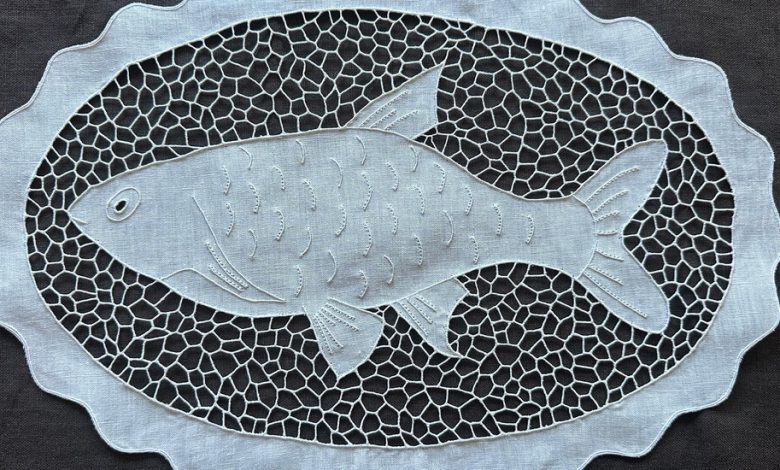The Unlikely Return of the Doily

When you think about lace, “modern” probably isn’t the first word that comes to mind. The centuries-old fabric, made by looping, twisting or knitting thread into various open-weave patterns, is more likely to evoke images of quaint cottage curtains or your grandmother’s bridal veil. But now, more and more young designers are incorporating the ethereal textile into their work, motivated by both personal nostalgia and a longing for the tactile and handmade in our increasingly virtual age.
Gohar World, the New York-based tableware brand founded by Nadia Gohar, 34, and her sister, Laila, 35, sells a delicate lace bib for champagne bottles and an Italian lace bonbon “bonnet” — essentially a doily with compartments meant to hold individual chocolates. And Levant, a Middle Eastern home goods company and arts and culture journal run by the New York-based designer Süreya Köprülü and the Milan-based designer Naz Muessel, both 33, will offer two different white lace-trimmed linen place mats on its e-commerce site, which is set to launch next month. One features a fish design and another was inspired by patterns popular in the Ottoman courts of the 16th century. In their own homes, Köprülü and Muessel often use the mats atop silver breakfast trays or place them in the center of a dining table as decorative elements. “But you could frame them and put them on the wall,” says Köprülü. “They’re really works of art.”

A lace place mat from the home goods brand Levant.Credit…Courtesy of Levant
Köprülü, who is half-Turkish, and Muessel, who is half-Iranian, remember seeing similar pieces in the homes of their grandmothers, “so there’s a nostalgic aspect for us,” says Muessel. “It’s a traditional craft that feels old-school, and I think, in a world that is ever more fast-paced and technology-reliant, people are gravitating to that. They want objects with stories. Where was the product made? By whom? What is the cultural context?”
Rachel Scott, 40, the New York-based designer behind the women’s wear line Diotima, was also inspired by the lace doilies she saw growing up. In her native Jamaica, the frilly pieces were a constant in her relatives’ houses. “It was everywhere,” she says of Jamaican crochet-work, which is thicker and less delicate than traditional European or Middle Eastern lace. “I’ve never seen these specific stitches elsewhere or the way that they’re treated with starch to preserve them.”




